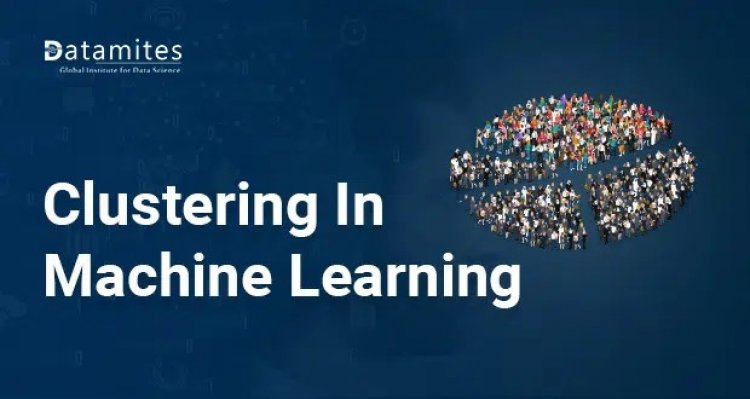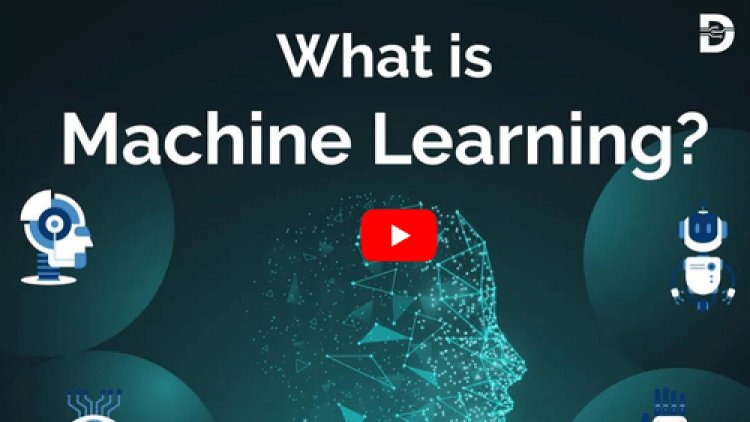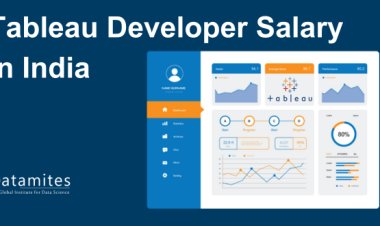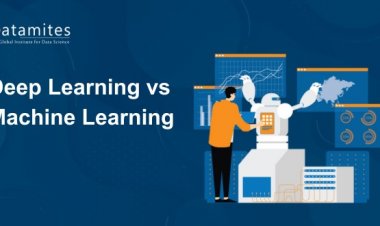Clustering in Machine Learning

Clustering is a widely used unsupervised learning technique that allows us to find hidden patterns or relationships between the data points based on the common attributes in the data. It is mainly used to extract valuable inferences from the data sets especially when we work with huge datasets. It also helps us in organizing the data. When we organize the data, it is much helpful in doing the analysis and understanding the pattern in the data. So let’s discuss clustering and its applications.
What is Clustering?
Clustering is the process of dividing the entire dataset into groups or clusters. Clusters are nothing but collections of objects that are similar to each other. As clustering is an unsupervised technique, we are not going to have labels in the data. When we have labels, it becomes a classification problem, a supervised technique. So how we will categorize the data when we don’t have labels?
Basically, clustering algorithms try to find the similarities in the data and groups the similar data points in one cluster and keep the dissimilar data points in other clusters. So, any two data points within a cluster have minimum distance and any two data points across different clusters have maximum distance.
Clustering is a very popular technique that is used to cluster data points. Clustering is basically done on similarity measures to group similar data objects together. This similarity measure is based on distance functions such as Euclidean distance, Manhattan distance, Minkowski distance, Cosine similarity, etc. to group objects in clusters. It tells whether two data objects are alike or different based on the distance between those two points. If the distance between two data points is less, then we can say that they are similar to each other. If the distance is large, then they are less similar to each other.
Importance of Clustering:
Clustering is a significant component of Machine Learning. It has a wide range of applications and advantages in real-world scenarios. It is widely used by many companies like Linkedin, Amazon, and Netflix to find identify similar personalities/customers or to find similar products liked by the customers. Based on this they recommend the products for the customers to buy or suggest people get connected with.
It is particularly used in applications like;
- Customer segmentation where similar customers are identified based on their purchase behaviour and are grouped for further discounts or offers.
- Image segmentation groups the similar attributes of pixels in an image to make it easier to analyze.
- In outlier detection, the data points that lie in a high-density area is considered to be normal data point whereas the data points that are away from all other data points and does not belong to any group are considered outliers.
- Data analysis: when it comes to analyzing the data it is very helpful in getting insights into the data by explaining the characteristics of each group/cluster.
Types of Clustering:
Clustering is categorized into partition-based clustering, hierarchical-based clustering, and density-based clustering.
- Partitioning Based Clustering: In this method, based on the distance the data points are partitioned into k clusters. Each partition is a cluster with similar data points. So here distance is the major parameter. An example of this is K-Means clustering, CLARANS.
- Hierarchical Clustering: In this method, it creates a hierarchy of clusters in the form of a tree which is called a dendrogram. It creates a subset of similar data points in a tree-like structure where the root node is the complete data and the branches are developed to create the clusters. There are two approaches to Hierarchical clustering. They are agglomerative clustering which takes the bottom-up approach and divisive clustering which takes the top-down approach.
- Density-Based Clustering: In this method, the distinctive groups or clusters are identified in the data considering that a cluster in the data space is a high-density region that is separated from other clusters by low-density regions. This method is also used for detecting the outliers in the data by assuming that the data points in the low-density regions could be outliers. DBSCAN Algorithm is the popular density-based algorithm that separates the cluster of high-density from clusters of low-density.
- Grid Based Clustering: In this method, grids are formed by partitioning the data space into a finite number of cells and based on the density in the cells, the clusters are formed. The contiguous set of dense cells is taken as clusters. Example of grid-based clustering is STING, Wave cluster, and CLIQUE.
So, we have various methods to create clusters in the data. It depends on what algorithm we use to see how the clusters are formed. And there are no proper criteria to assess the clustering as good or bad. It depends on the user to decide how the clusters should be. In general, the clusters are assumed to be spherical in shape but it is not necessary that always the cluster be in a spherical shape. It can be of any shape.
For further references:
BUILD A TENSORFLOW OCR IN 15 MINUTES WITH DEEP LEARNING TECHNOLOGY
Different Types of Feature Scaling and Its Usage?
Outlier Detection and Its importance in Machine learning
A Guide to MLOps (Machine Learning Operations)
Conclusion:
Clustering can also be called an exploratory data analysis technique as it helps us in analyzing the dataset. It provides a proper statistical basis to group the data objects into clusters. The ideal clusters should be having minimal intra-cluster distance and maximal inter-cluster distance.
DataMites is a leading data science institute that offers specialised training in subjects including machine learning, deep learning, artificial intelligence, the internet of things, and python learning. The International Association for Business Analytics Certification (IABAC), an organisation with a solid reputation and high regard in the analytics community, has approved our Machine Learning Courses at DataMites.
Go through: What is Machine Learning and How does it work?

 Datamites Team
Datamites Team 




